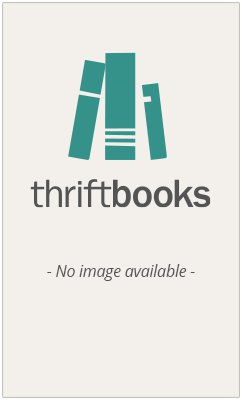???? ? ???
Repackaged to feature Tolkien's own painting of the Tree of Amalion, this collection includes his famous essay, 'On Fairy-stories' and the story that exemplifies this, 'Leaf by Niggle', together with... This description may be from another edition of this product.
Format:Paperback
ISBN:9643345548
ISBN13:9789643345549
Release Date:January 2017
Publisher:?????
Length:252 Pages
Customer Reviews
5 ratings
My Master's Voice
Published by Thriftbooks.com User , 16 years ago
I've always wanted to read Tolkien's other works; I've read the Silmarillion a couple of times, and never really enjoyed it as much as the Hobbit or LOTR. But nonetheless, I've had an old copy of a Tolkien book called Tree and Leaf for years -- it was my parents' originally -- and I finally dove into it. It's short, only two pieces, but it was excellent -- and excellent in a way that makes me ten times more eager to look for other Tolkien ephemera than The Silmarillion ever did. The first part of this is an essay, expanded from a lecture Tolkien gave, called On Fairy-Stories. And not only was it interesting and well-written, it had some absolutely brilliant insights; I don't know if they were Tolkien's or simply common knowledge among Oxford literature dons, but I loved reading about the power of adjectives, and the concept of the sub-creator, and the idea that a fantasy world does not require a suspension of disbelief, but rather an acceptance of an internal continuity that allows a sub-creation of a new world within the pages, a world that, if well done by the author and well-read by the audience, requires no suspension of disbelief but merely a shift in sensory input, from direct input to that which is imagined from the words. Great idea that I'm not doing justice to, but intend to revisit and clarify further in my own mind, and use to my advantage. It certainly reaffirmed my belief that Tolkien was the leading light of the fantasy genre, both because of his immense gifts as a writer, and because he understood fantasy, its advantages and disadvantages, its requirements and its place in literature and our lives. And as a final piece of proof, the second piece in the book is a fairy-story that Tolkien wrote, called "Leaf by Niggle," which was simply lovely from start to finish. Twenty pages, and it encapsulated the sense of being a frustrated artist in the real world, and the advantages of living, therefore, in an invented world -- advantages that are not just for the artists, but also for their neighbors -- in addition to having a nice moral on the power of art to lead us home. Once again, Tolkien takes his place in the big chair.
understanding Tolkien
Published by Thriftbooks.com User , 16 years ago
This collection should be on the shelf of any admirer of JRTT. The pieces, which vary in medium (poetry, short story, essay) are actually strikingly similar in content -- you cannot read them without coming to better understand what Tolkien himself was after in his writing of LOTR. 'Leaf by Niggle' is simply a beautiful and fun short story to which no artist -- or lover of life -- could be deaf. It's Tolkien's story about himself, really. The poem 'Mythopoeia' deserves several read throughs -- it took me a while, but once it starts to become clear, it won't let go. And of course, this collection includes the famous lecture "On Fairy Stories" -- which will help you to better understand not only JRRT, but also CS Lewis (see: 'Tree of Tales', ed Hart)
A great short story
Published by Thriftbooks.com User , 17 years ago
I liked Tolkien's other books (Lord of the Rings trilogy and the Silmarillion), but he can get long-winded when describing things. Leaf by Niggle is great because Tolkien limits his descriptions to only what is necessary to advance the stories, and it is beautiful and short. I didn't so much appreciate the essay 'On Fairy Stories' but the book is worth it just for Leaf.
Lesser known works are just as valid as the rest
Published by Thriftbooks.com User , 20 years ago
First, this edition is out of print, but if you can find it, that would be good. This book contains one essay and three stories. You can find these writings in other books or collections, but it's still handy to have them in one edition. I got my copy by using an out-of-print specialist. Also, this has no bearing or relation to the Hobbit or Lord of the Rings, for which some readers may be disappointed. The author has many other works besides the Lord of the Rings. Like most well-known artists, they're remembered for their masterpeices, while the lesser-known works are neglected. The essay is a discussion of "fairy tales", and gives insight into Tolkien's concept of a "fairy tale", which are not the sugary-sweet, rot-your-mind tales we often imagine when we hear the phrase "fairy tale". The two following stories elaborate on that concept: "Tree and Leaf" is a character study in a "little" man who is suprised how his insigificant work turns into something more than he could have imagined. "Smith of Wootton Major" is a story of a man who was privilaged to visit the "perilous realms". The last story, "The Homecoming of Beorhtnoth" also reveals the authors general focus of interest - Anglo-Saxon languages, poetry, etc.
insight in this creation
Published by Thriftbooks.com User , 22 years ago
This is a beautiful book. Reading through it, the intentions of Tolkien are revealed. It makes all of the stories of middle earth more real, tangable, comforting. It can be read and reread; each time more layers, more connections are made. Tolkien confronts reality of fantasy in this essay and poem. He justifies our human need for subcreation, and comfort in art.





